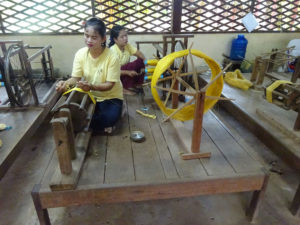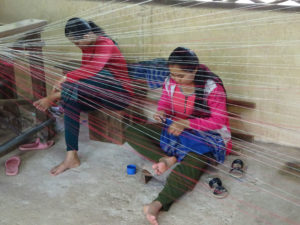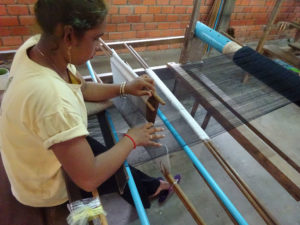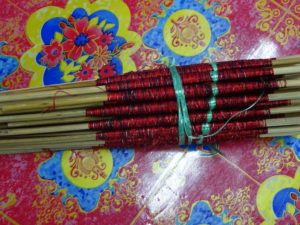History of Silk in Cambodia
I visited Cambodia last summer and one of the highlights of this holiday was a trip to Angkor Wat and the silk industry around Siem Riep. We visited Artisans Angkor in both the town and the workshop in the country site and were hugely impressed with the level of craftsmanship and the vision of the company. Artisans Angkor provides vocational training to help young rural people, who are very proud of their Angkorian heritage, to find work near their home village.
The following extract is from their website and if you would like more information please visit www.artisandangkor.com. The photos are taken at their rural workshop.
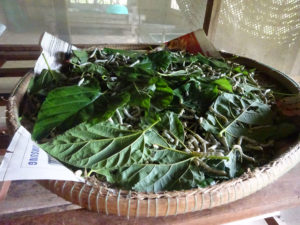
‘The Silk industry started in Cambodia during the 13th century, then known as the Khmer Empire. Chinese diplomat Zhou Daguan visited the region at that time and reported the beginning of silk activities. Those developed along the Mekong and Basac rivers in the south of Phnom Penh with mulberry plants to breed silk worms. The bas-reliefs of Angkor Wat and Bayon reflect these changes as Apsaras costumes display geometrical patterns similar to the Indian Ikat technique named Patola.
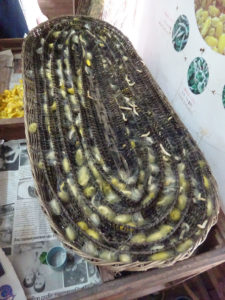
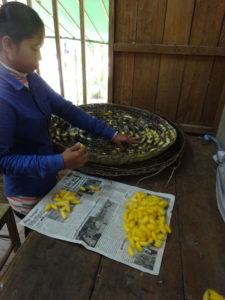
From the 19th century until the 1970s, the weaving technique developed and the industry spread to the Tonle Sap, the largest lake in Southeast Asia, and to settlements such as Battambang and Siem Reap. As the skills had evolved, Cambodian Ikat, the dyeing technique to produce unique patterns, gained universal recognition in the 19th century. Around a quarter of families lived thanks to silk production at that time.
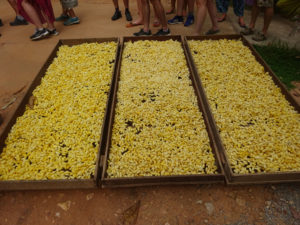
There are different types of traditional silk fabrics and techniques. The two major techniques are Ikat and uneven twill, a quicker method yielding single or two-colors fabrics. Fabrics include Pidan used as tapestry during religious ceremonies, Hôl Lboeuk as one of the most refined, Chorebap used for weddings, and Sarong and Krama using cotton and serving multiple purposes.
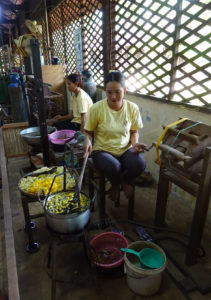
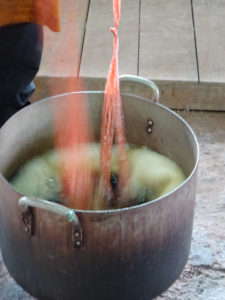
From the 1970’s, the silk industry was disrupted under the Khmer Rouge regime which almost destroyed the industry. They strictly limited coloured clothing and imposed black pajamas for the population. The Vietnamese intervention in 1979 did not benefit the silk industry which slowly recovered only after the 1993’s transitional government.’

